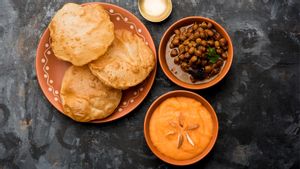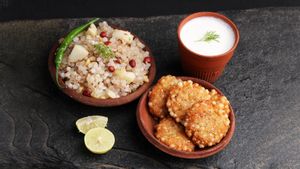Sharad Navratri is one of the most colourful and celebrated Hindu festivals in India and marks the beginning of winter. During the festival of Navratri, or nine nights, Hindus across the country worship the nine incarnations of the Goddess Durga. While Sharad Navratri is the most celebrated Navratri, there are actually four Navratris in the year. Each of these mark the major season changes. With the celebrations, some Hindus also observe ritualistic Navratri fasts during this festival.
Did you know fasting during Navratri can also be great for your body and mind? During such seasonal changes, the body's immunity tends to be vulnerable. At such a time, it is best to avoid heavy, heaty and greasy foods. Fasting helps to detoxify the body, gives one's digestive system a rest and in the bargain saves it from the hard work of digesting high-energy foods.
During the fasting period, most people abstain from the consumption of meat and alcohol, and only specific foods and spices are allowed. Amidst the many restrictions and permissions, Navratri fasting could prove to be a tad bit confusing, especially if you’re planning to follow the Navratri fast for the first time. While the Navratri fasting rules differ from community to community, we’ve got most of the basics covered for you.
To fast or not to fast
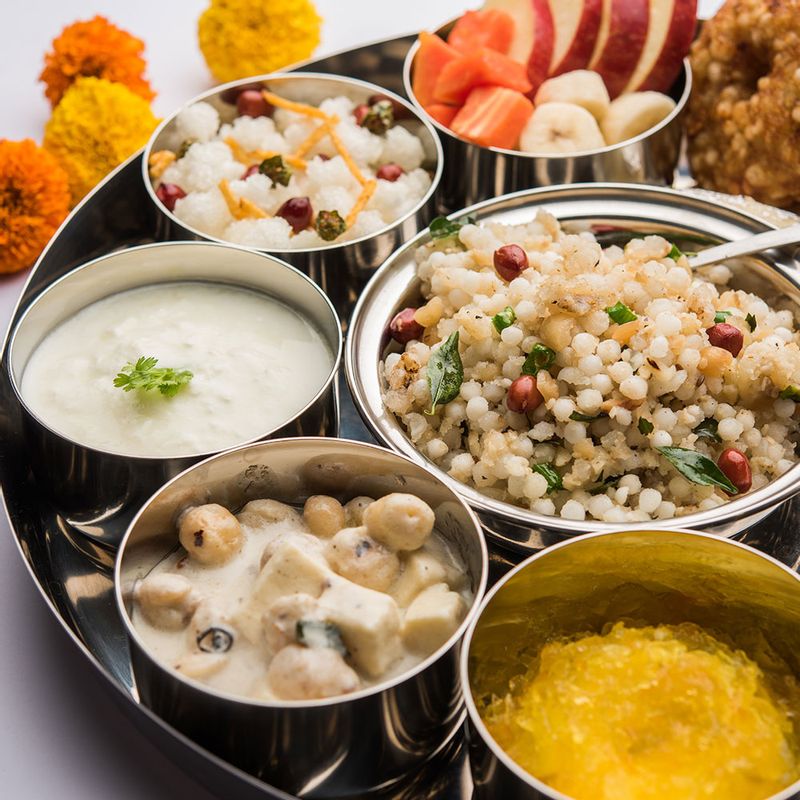
Niyati Likhite, a dietician at Fortis Hospital Kalyan, says, “It is believed that fasting purifies your mind, body and soul.” According to Ayurveda, fasting is an effective therapy to help cleanse your body from the inside out. However, fasting isn’t meant for all. Likhite says, “It’s ideal that children, elderly people, nursing mothers, pregnant women and people with medical conditions such as diabetes, heart diseases, cancer, tuberculosis, renal disease and other illnesses refrain from observing a fast.”
If you're planning to observe a fast during Navratri, it's best to ensure that you are well-rested, emotionally prepared for the hunger-induced mood swings and not going through times of high stress.
Before fasting
Start with your kitchen. Get rid of any tempting foods or beverages that aren't aligned with the rules of fasting. Stock up on vrat essentials that you’re allowed to eat at least one week prior to the day of fast.
A few days before the fasting begins, start reducing your portion sizes. For example, if you usually have four chapatis or one full bowl of rice, you could try bringing it down to two chapatis or a 3/4th cup of rice. Start including more fresh fruits and veggies in your diet to ensure that the fast doesn’t come as a surprise to your system.
Since you’ll be abstaining from meat, alcohol and other tempting foods, you could treat yourself to all of these a few days prior to D-day. However, you should avoid gorging yourself silly right before a fast and opt for a well-balanced meal instead.
Navratri fasting checklist
1. Flours and grains
One of the Navratri fasting rules is refraining from grains like wheat and rice. But that doesn't mean you have to starve yourself. Take this opportunity to introduce yourself to alternatives like kuttu ka atta (buckwheat), singhare ka atta (water chestnut) and rajgira ka atta (amaranth) to make your flatbreads. You can use samai or samvat ke chawal (barnyard millet) to fix yourself a hot bowl of khichdi or kheer.
Sabudana (tapioca pearls) is a popular go-to option and can be made into papad, kheer, khichdi and even vadas. Likhite says that these replacements are a good source of protein, iron, calcium and magnesium. They are also easy to digest, rich in dietary fibre, help provide satiety and most importantly are gluten-free.
2. Seasoning
Since the idea of Navratri fasting is to eat light and detox your body to prepare it for the seasonal change, not many spices are permissible for consumption. Start with bidding goodbye to your regular salt. While rock salt aka sendha or vrat wala namak does have its own health benefits – low on sodium chloride and rich in minerals, Likhite says, “It is best to use iodized salt even during fasting.” She explains, “Since rock salt is less processed, thereby containing many impurities, it may have severe health hazards.”
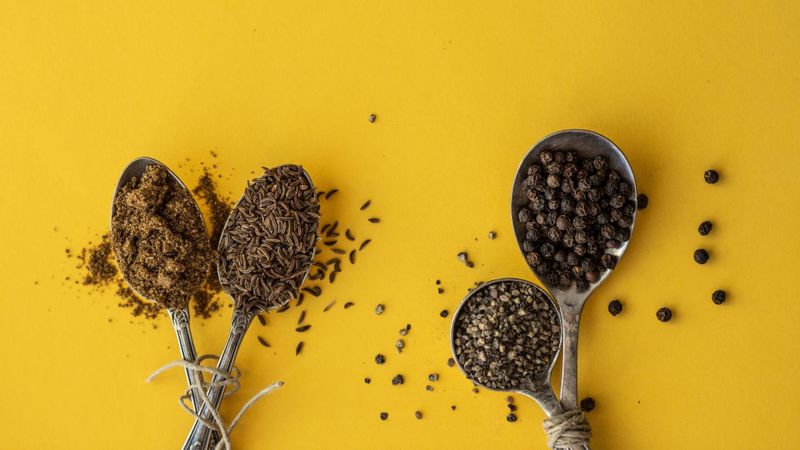
Coming to spices, haldi (turmeric), hing (asafoetida), sarson or rai (mustard), methi dana (fenugreek seeds), garam masala and dhania powder (coriander powder) are usually avoided during Navratri fasting as they are known to generate heat in the body. Instead, you can spice up your foods using cumin seeds or cumin powder, black pepper powder, green cardamom, cloves, cinnamon, ajwain, black peppercorns, dry pomegranate seeds, kokum, tamarind and nutmeg.
Sugar, honey, jaggery can be consumed. The use of fresh coriander leaves, red chilli powder, amchoor (dry mango powder) and chaat masala is permissible in some homes.
3. Fruits and Vegetables
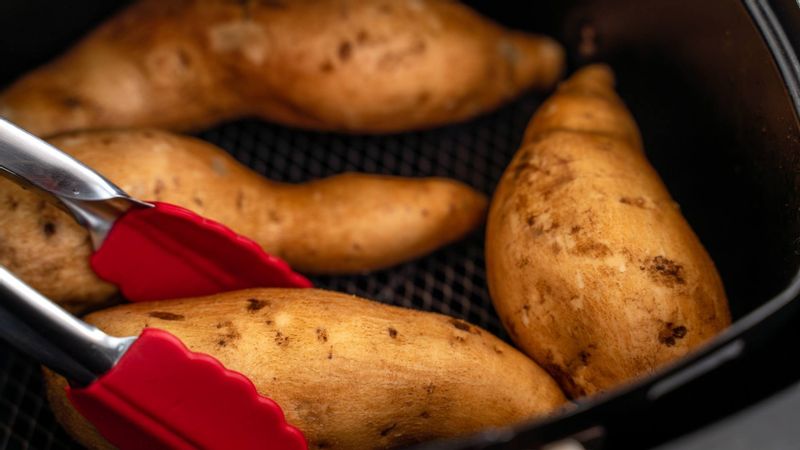
You can turn to any fruit of your choice for your daily intake of nutrients. Blend them in a mixer or simply have them as chaat or fruit salad. Veggies such as potatoes, sweet potato, arbi (colocasia), suran (yam), lemons, tomatoes, raw or semi-ripe pumpkin and raw bananas, spinach are what are usually preferred.
Besides, bottle gourd, cucumber and carrots are also allowed in most homes. However, the use of garlic and onions is strongly prohibited.
4. Drinks
Consumption of tea and coffee are allowed. Besides, all milk-based drinks like chaas (buttermilk), dahi (curd) and lassi can also be consumed. Additionally, coconut water and milk, cashew and almond milk too are allowed.
While fasting
Always stay hydrated - be it in form of water, fruit juices or milkshakes. “If you are observing a water fast, in which you will only be having water and nothing else, make sure to sip on some water every two hours as there are many risks involved such as muscle loss, dehydration, hypotension, low blood sugar, heartburn, constipation, and in certain cases it may also increase your food craving which may lead to weight gain,” says Likhite.
While Navratri meals might sound simple and nutritious, many people trick themselves into believing that they are cleansing the body when in fact they are doing it more harm. Likhite says, “During fasting, most people end up eating fried foods.”
Say no to deep-fried vrat snacks and bake or grill them instead with a little or no oil/ghee. She suggests including roasted dosas made with rajgira, shighare, kuttu atta and bhagar khichdi instead as they help improve one’s gut microbiome and get rid of toxins from the body. If possible, avoid potato sticks, sabudana vadas, banana chips, potato chips as they lead to weight gain, she adds.
Refrain from buying snacks which read 'diet chivda', ‘diet chips’ or 'Navratri special'. Not only do these snacks come soaked in oil, but also at times may consist of ingredients that you shouldn't be consuming.
Breaking your fast
Even though you’ll want to eat everything in sight once your Navratri fast is over, it’s best to go slow. Avoid oily/greasy and spicy foods immediately after breaking your fast. Gorging on unhealthy food right after fasting may prove harmful to your health. Break your fast with a light meal.
Eating too much and too quickly after a fast can cause nausea, undo the cleansing process and positive effects of your fast. Once your appetite gets stronger, add spices, grains and pulses in addition to other veggies. Once your body gets used to these changes, you can get back to consuming non-vegetarian foods too.



